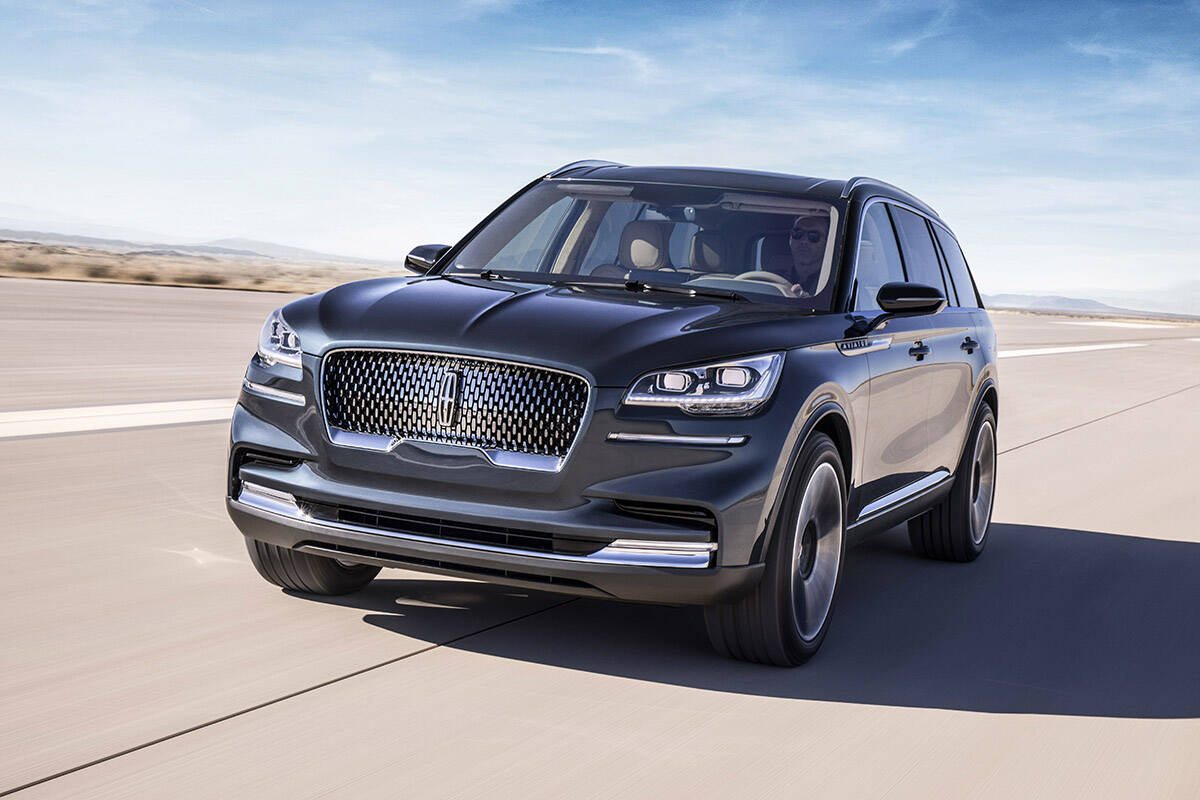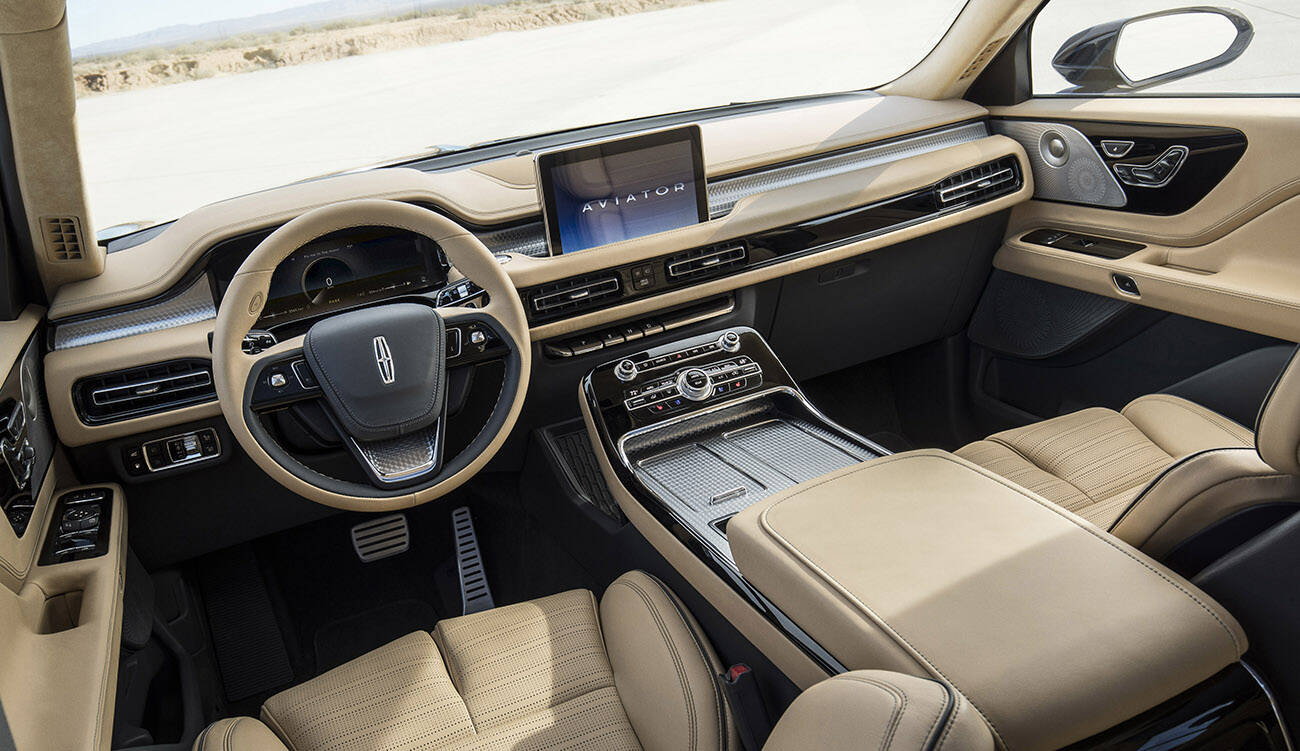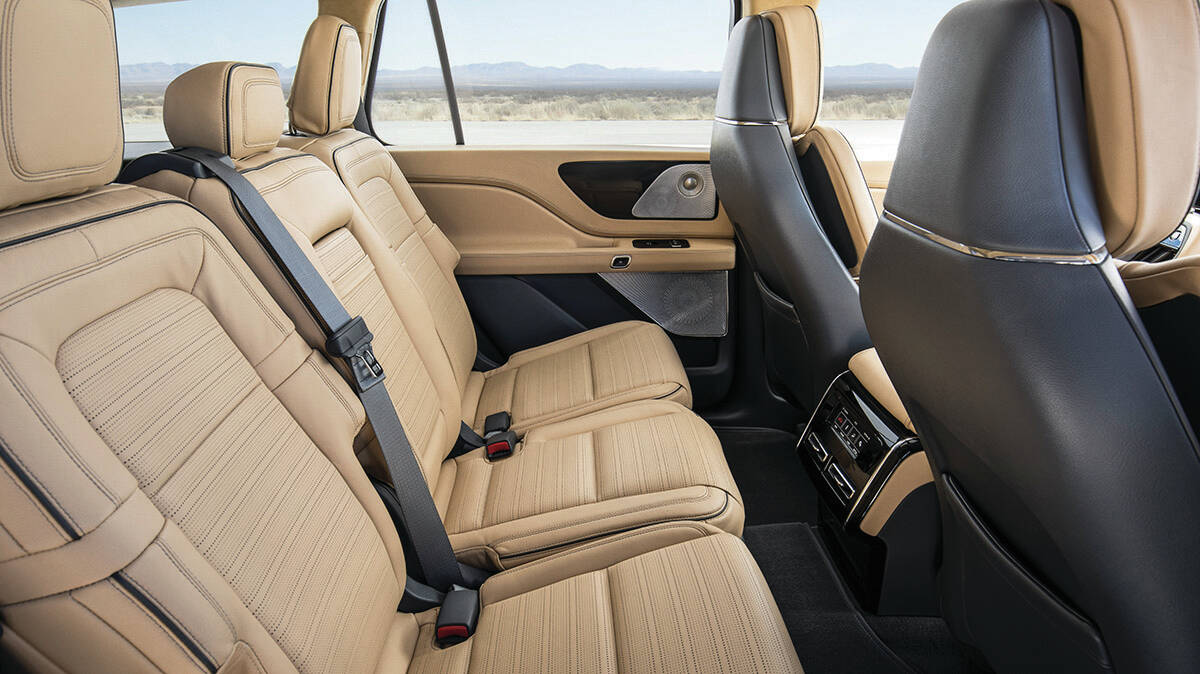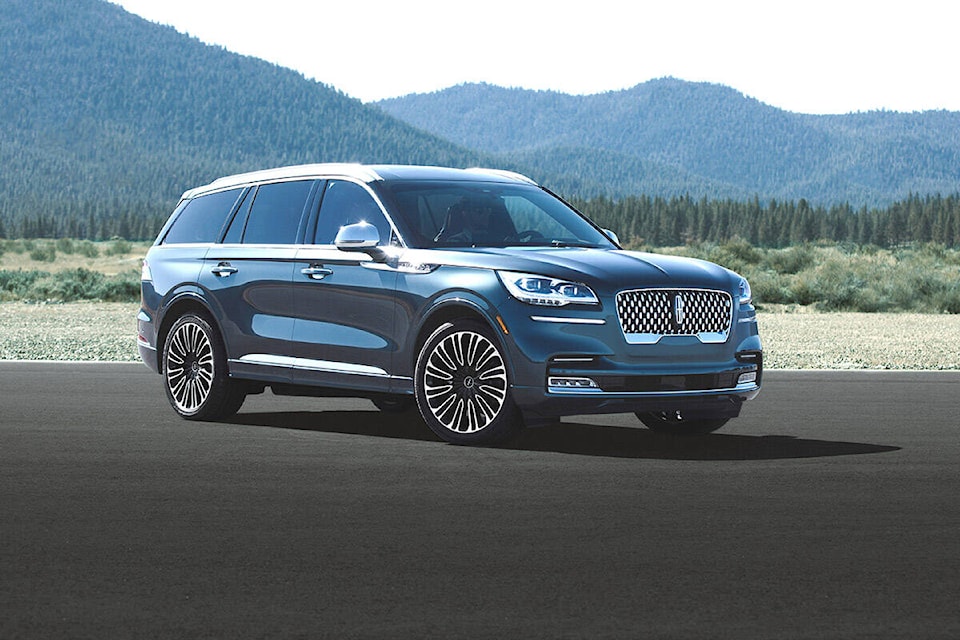Lincoln has just four vehicle models to sell ÔÇô all utility vehicles ÔÇô and thatÔÇÖs it. That means every one of them has to pull its weight.
Where did the rest go? The Continental and MKZ sedans were deleted from the lineup for the 2021 model year.
The Aviator ÔÇö a nameplate originally attached to the Ford-Explorer-based Lincoln sold from model years 2003 to 2005 ÔÇö slots between the giant-size Navigator and the midsize Nautilus. The entry to the lineup is the compact Corsair.
The Aviator, which arrived for the 2020 model year, is built on the same rear-wheel-drive platform as the Ford Explorer. That means the available powertrains are positioned longitudinally ÔÇô front to back ÔÇô and not sideways, as was the case with the ExplorerÔÇÖs previous front-wheel-drive architecture.
A regular springs-and-shocks suspension is standard, but upper trims come with air springs with active (constantly adjusting) dampers. They work in combination with a camera that scans the road surface to assist the active suspension in smoothing out the ride.

The bodywork is decidedly elegant, from LincolnÔÇÖs signature grille (reminiscent of JaguarÔÇÖs, actually), on back to the slightly angled liftgate. Instead of squaring off the roofline as the designers did with the Navigator, the AviatorÔÇÖs slopes downward toward the rear. That plus the slight creases around the fender openings contribute to the vehicleÔÇÖs shapely appearance.
The extended-length rear doors aid access of the two-place 50:50 split-folding (and power-folding) third-row seat.
ThereÔÇÖs abundant space for seven passengers, or six if the available second-row bucket seats are ordered in place of the standard three-person bench. The individual seats can be separated by one of two different types of floor consoles.
The driver and front passenger have a clear view of the standard 10.1-inch or optional 12-3-inch information screen that sticks out of the dashboard like a slice of bread in a toaster.
The base Aviator is fitted with a twin-turbocharged 3.0-litre V-6 that makes 400 horsepower and 415 pound-feet of torque. Power is distributed to all four wheels through a 10-speed automatic transmission. It plays a pivotal role when the optional plug-in hybrid powertrain is selected. The systemÔÇÖs 100-horsepower electric motor is connected to the 10-speed, increasing the twin-turboÔÇÖs output to 494 horsepower and 630 pound-feet. With the battery pack fully charged, the hybrid is claimed to provide up to 34 kilometres of electric-only range.
The base turbo V-6 is rated at 13.7 l/100 km in the city, 9.7 on the highway and 11.9 combined. The hybrid is actually only slightly better at 10.3 l/100 km combined, but that increases to 4.2 l/100 km combined when factoring in the electric-only operation.

Of the two available trim levels, the Aviator Reserve, which lists for $72,200 including destination charges, comes with tri-zone climate control, heated 10-way power-adjustable front seats, forward and reverse object sensors and 19-inch wheels.
The Reserve also gets 20-inch wheels plus quad-zone climate control, premium 14-speaker sound system and a hands-free power liftgate. Optional are 22-inch wheels, 30-way power front seats with massage (also heated and ventilated), a 28-speaker sound package and a panoramic roof.
Along with the extra-potent hybrid power system, the Grand Touring is outfitted with a host of extras, including air suspension with a system that automatically lowers the body when the driver approaches.
As well, the two dozen or so audio alerts that sound whenever a seat belt isnÔÇÖt attached or when a door is ajar, etc., have been created by the Detroit Symphony Orchestra. HowÔÇÖs that for class?
Drivers can unlock the Aviator and start it via a Phone As Key app. An exterior keypad can also be used as a backup if your phone goes dead.
With plenty of choices in the full-size luxury-utility class, the Aviator manages to stand out as one of the most visually appealing. And when the plug-in hybrid is selected, itÔÇÖs also one of the most powerful.

What you should know: 2021 Lincoln Aviator
Type: All-wheel-drive full-size utility vehicle
Engine (h.p.): 3.0-litre DOHC V-6, twin-turbocharged (400/494, with electric assist)
Transmission: Ten-speed automatic
Market position: FordÔÇÖs Lincoln division has fortified its tall-wagon lineup to include a range of sizes and power systems, while abandoning the luxury-sedan segment entirely. That leaves Cadillac as the sole domestic premium sedan supplier, along with a number of import-based automakers.
Points: Elegant upscale styling pulls out all the stops. ÔÇó Spacious interior is appropriately well-dressed, but the information screenÔÇÖs placement is jarring. ÔÇó Twin-turbo V-6 pumps out plenty of power. The hybrid version does even better and is also more fuel-efficient. ÔÇó Too bad the more expensive hybrid powertrain also requires the pricier upper trim level.
Active safety: Blind-spot warning with cross-traffic backup alert (std.); active cruise control (std.); emergency braking (std.); lane-departure intervention (std.); pedestrian detection (std.)
L/100 km (city/hwy): 13.7/9.7
Base price (incl. destination): $72,200
BY COMPARISON
Cadillac XT6
- Base price: $61,700
- This three-row AWD model is the AviatorÔÇÖs main rival among domestic brands.
Lexus RX 350L
- Base price: $62,350
- Seven-seat RX 350 model has style and space. Hybrid version is also available.
Volvo XC90
- Base price: $66,850
- Luxury Swede uses a turbo four-cylinder engine for all trims. Plug-in hybrid opt.
ÔÇô written by Malcom Gunn, Managing Partner at Wheelbase Media
If youÔÇÖre interested in new or used vehicles, be sure to visit TodaysDrive.com to find your dream car today! Like us on Facebook and follow us on Instagram



